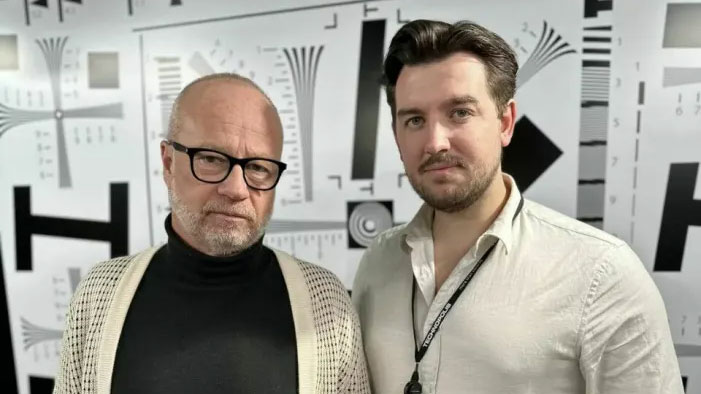Norwegian start-up gets $8.7 million investment to reinvent the camera – it just won't say how
"Think of the bullet time scene in The Matrix, where the actor was surrounded by multiple cameras," said the CEO

Deep-tech start-up Muybridge, based in Oslo, has secured $8,745,000 in funding led by Fairpoint Capital.
Founded in 2020 by Anders Tomren and Håkon Espeland, according to its website, Muybridge says that it was created "With the belief that to truly tell a story in its fullest form, the storyteller should not be burdened by the weight of their tools."
"In a world where technology defines the boundaries of imagination, Muybridge emerged from a vision as bold as it was simple: to turn cameras into an extension of the human desire to capture and create."
Any clues as to what the $8.75 million is for yet? Me neither, but it's clearly well beyond what Eadweard Muybridge could imagine.
The Muybridge website is consistently vague, with no product images, only multiple black and white images of the two co-founders, as well as a man called Berk Cinar, CCO.
Cameras, and increasingly smartphones, already enhance images using software-based techniques, however Muybridge’s aim appears to be removing the physical factors that can limit the end result, such as lenses or sensors.
Instead of relying on a fixed camera system, Muybridge claims to be “replicating human vision in software, in real time,” with an aim to solve hardware complexity with software.
The best camera deals, reviews, product advice, and unmissable photography news, direct to your inbox!
“We have designed and developed our own algorithms. We generate weightless, moveable virtual cameras with zero latency.”
Its platform appears to offer unique software solutions "via APIs and SDKs, enabling quick market entry for new products. It leverages high-speed performance in a compact form factor, ensuring reliable, synchronized high throughput and parallel computation through FPGAs and GPUs."
Still clueless.
In an attempt to clear it up, speaking to The Next Web, CEO and co-founder, Håkon Espeland said:
"Think of the bullet time scene in The Matrix, where the actor was surrounded by multiple cameras. Now, just imagine hundreds or thousands of them – each as small as a smartphone camera – lined up, feeding visuals into software."
"Now imagine that setup within the walls of your video conferencing room around a sports stadium, or even within a tennis court net or between football goal posts, with multiple cameras and sensors pushing imagery from new and never seen before angles, while state of the art software combines those multiple feeds into one video feed ready for broadcast – that’s revolutionary."
Take a look at our guides to the best best HDR software, the best free video editing software and the best free photo editing software.

After graduating from Cardiff University with an Master's Degree in Journalism, Media and Communications Leonie developed a love of photography after taking a year out to travel around the world.
While visiting countries such as Mongolia, Kazakhstan, Bangladesh and Ukraine with her trusty Nikon, Leonie learned how to capture the beauty of these inspiring places, and her photography has accompanied her various freelance travel features.
As well as travel photography Leonie also has a passion for wildlife photography both in the UK and abroad.
